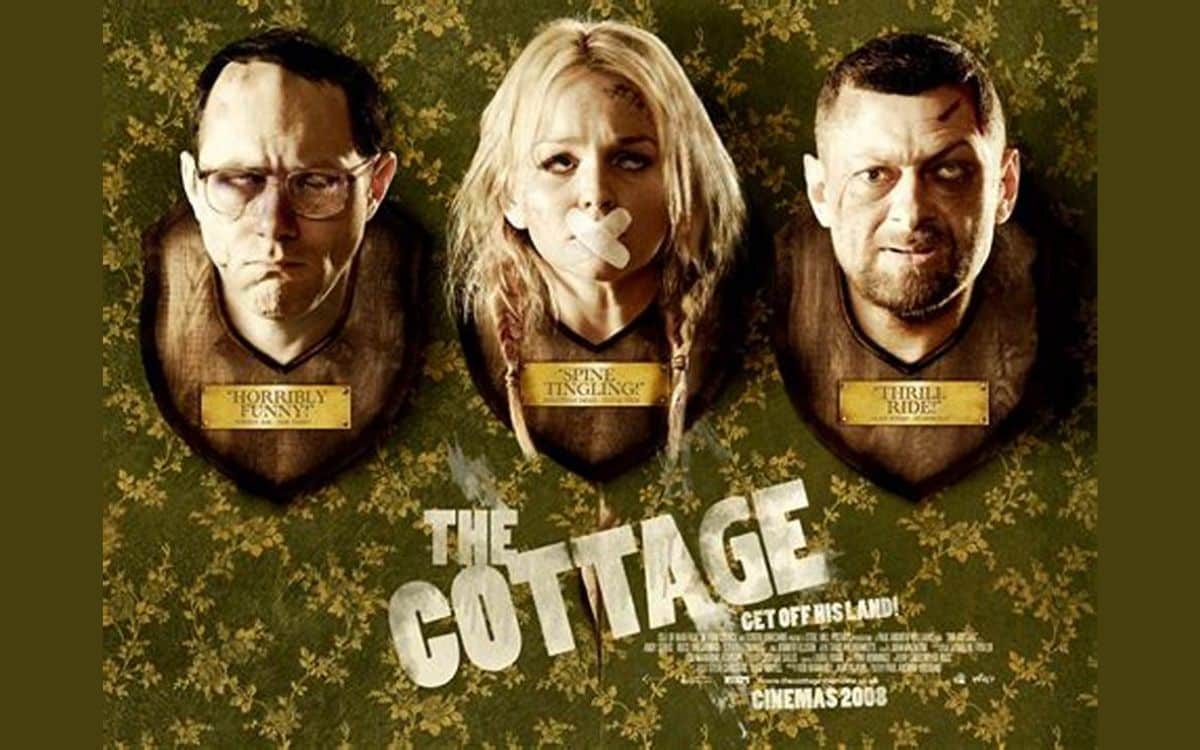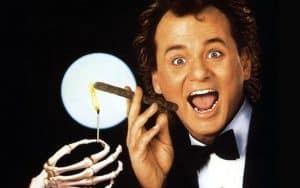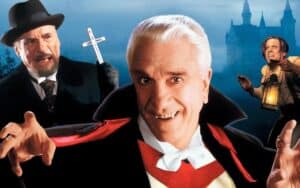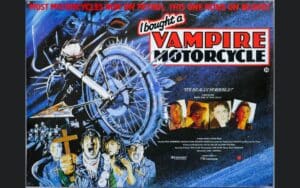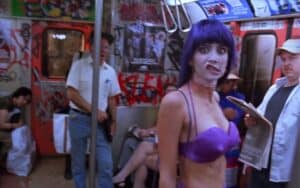The Cottage 2008 is an enjoyable British horror comedy, despite its gore and notable plot holes, writes GEMMA JOHNSON
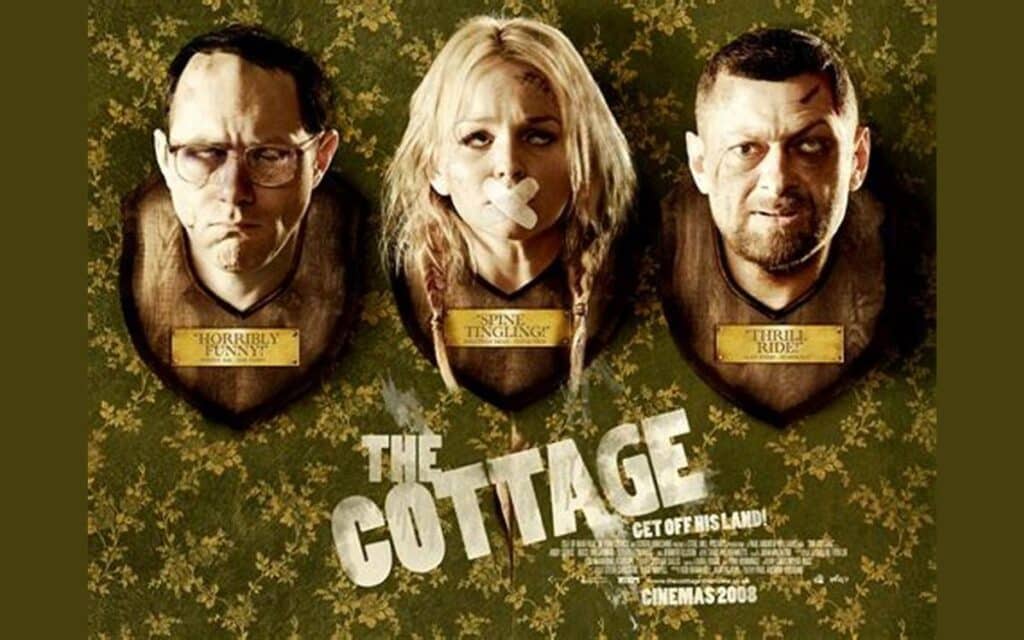
TITLE: The Cottage
RELEASED: 14 March 2008
DIRECTOR: Paul Andrew Williams
CAST: Andy Serkis, Reece Shearsmith, Steve O’Donnell, Jennifer Ellison
Review of The Cottage 2008
A trip to a scenic cottage surrounded by woodland and mysterious locals, and a very upbeat soundtrack that Disney would be proud of. Sounds like the perfect family film for a cold autumn evening?
Nope, this is possibly as far from a family film as you can get. It is a gory slash fest littered with profanity from the very outset.
Avoid watching if you are easily offended or don’t like blood; fortunately, neither offends me, and I discovered it is quite an entertaining film, provided that you view it as a comedy and nothing else.
The Cottage is a British film released in 2008, directed and written by Paul Andrew Williams. The plotline centres around a bungled kidnapping and a remote cottage in the woods.
There is some stellar talent in this film, such as Andy Serkis and Reece Shearsmith, who play brothers at odds over their late mothers’ estate.
Horror film etiquette determines that any outing into secluded farmhouses, cabins, cottages, or manor houses never really ends well for those concerned – Cabin in the Woods and the recent Knock at the Door being examples of this.
The Cottage 2008 is the lesser-known film of this genre, but if you can look past some of the plot holes (which I will circle back to later), this is a solid film with some of the most unusual kill methods I have ever seen. You have to wonder about the imagination of the person who created them; they are disturbing, they are gruesome, and they are likely to put you off eating your movie snacks.
From the outset, we are at the cottage with the two brooding brothers, David and Peter.
David (Serkis) is the more menacing of the two, focused on the job in hand – the job being Tracey (played by Jennifer Ellison), who is in the boot of the car – something we only discover when Peter (Shearsmith) goes to get the milk from the car so he can make a brew. Peter is fretting about being away from the wife.
It is safe to say that David does not like his sister-in-law, and there are lots of choice words used to describe her. While it may seem that making a brew wouldn’t necessarily be the first port of call for someone engaged in a criminal act, as an avid tea drinker, I appreciate that a good brew is necessary before anything, which in this instance is carrying a body into the house.
Who is the body? Why do they have it? Is she dead or alive? The audience is left pondering this as Peter and David carry her upstairs, Chuckle Brothers style. Left alone with her, Peter is holding her up at the top of the stairs when she springs to life in a frenzy of headbutting. Tracey is not a vulnerable victim; she likes to fight, loves the C word, and is apparently the stepdaughter of a crime boss, Arnie, which leads us to plot hole number 1.
We discover that this is a kidnapping led by David and supported by Peter, but then we meet Andrew, who is charged with the task of taking the money to the hostage takers by his dad (said crime boss, Arnie). Arnie then has Andrew followed by two of his flunkies, but when Andrew arrives, he appears to be involved with the kidnapping. This element of the plot was murky, and it would have benefited from a brief backstory so that we could understand the connection between the different key characters.
The kidnapping descends into chaos: Peter has forgotten his mobile phone charger; Tracey has now clocked on to the potential identities of her kidnappers; and the two flunkies who followed Andrew have a random guy gagged in the back of their car. Plot hole number 2: we don’t get to find out who this guy is, why he is there, and his significance to the events that are unfolding because a machete-wielding killer arrives (identity unknown at this point) and butchers the two flunkies.
The guy in the back of the car is last seen falling into the kitchen of the cottage with his guts hanging out. From a narrative perspective, these fine details are needed so that we can make sense of the plot that is unfolding before us; they build the illusion. Viewers don’t want to question the relevance of characters, as it takes away from the experience.
A second mobile phone tragedy occurs. Peter, using David’s phone to call his wife, drops the said phone into a puddle, thereby destroying any possible communication channels. I am pretty sure that my old Nokia 3310 would have survived a bath in a muddy puddle, but I digress. You may be wondering why communication channels were needed. Well, blundering idiot Andrew didn’t check the bag of money prior to departing for the cottage; had he done so, he would have discovered it was full of tissue paper.
Ironically, by the time David discovers this, Tracey has broken Peter’s nose, so the tissue actually came in handy to mop up the blood. David needs the money; he wants to buy a boat and sail off into the sunset, plus he wants compensation for having to deal with the bunch of clowns that he has gotten involved with. In a flurry of swear words, David jumps in the car and sets off to the nearest village to find a phone box. Are phone boxes still a thing? I can’t recall the last time that I saw one.
This is where we encounter plot hole number 3. When David leaves the phone box, he finds he is surrounded by a mob of elderly people in flannel robes and house shoes, staring at him in silence.
The mob leader, a severe-looking elderly man with a dog, warns David about being out. David launches into a string of expletives and drives off into the night. Who were these people? Why did they appear zombie-like, and what was the significance of their age given that they were all elderly? This warranted further elaboration and served as another source of frustration for the viewer.
Screeching up to the cottage, David discovers that Tracey has broken free and fled into the night, taking Peter with her and leaving unconscious buffoon Andrew on the floor. The focus then shifts to a very sweary Tracey, marching Peter off on an adventure – through the muddy fields, over the fence, and into the seemingly abandoned farmers house – like “We are Going on a Bear Hunt’ horror movie style.
Upon arrival at the farmer’s house, we descend into the similarities of another childhood favourite, ‘Goldilocks’, but instead of the three bears finding Tracey and Peter, it is a murder with a deformed face known as The Farmer.
This is where we encounter plot hole number 4. There is no backstory to explain who the farmer is, whose house he has taken over, or why he is so hideously deformed. The house is littered with belongings that are quite clearly not his. Who do they belong to, and what happened to them? The perfect opportunity to explore this backstory would have been when David encountered the cast of Cocoon in their pyjamas, a missed opportunity to cement this part of the narrative.
We quickly descend into a bloodbath, a frenzy of swearing, running, hiding, and trying to escape from The Farmer. This is when we witness one of the most unusual killing methods I have seen in a horror film – it involves a shovel being placed into Tracey’s mouth and decapitating her. It is very gruesome, ggory,and everything else that any slasher film fan wants to see. Peter is hung up like a pig, waiting to be slaughtered and gutted in a nearby shed.
The focus then shifts to David and Andrew, who have regained consciousness, as they follow in the footsteps of Tracey and Peter into the hands of the hook-wielding farmer. David begins searching for his brother and discovers that all is not what it seems at the farmhouse. They stumble into what I imagine the backstage of Madame Tussauds looks like: rows of wax-like heads and body parts carefully organised on shelves. But these are not for a waxwork display; this is the personal collection of the farmer, whose macabre caboodle could rival that of Leatherface.
Andrew is the subject of the next gory slaughter. Not satisfied with merely stabbing him with a hunting knife, our farmer cuts his spine out, leaving the head intact on the spine, and carries it off with glee, like some warped hunting trophy complete with dripping goo, tissue, bones, and nerve ends glistening in the moonlight. We are left with the two brothers fighting for survival. Peter is freed from the pig hook and goes to the rescue of David, now pinned down with a pickaxe to the leg.
We witness a touching moment between the brothers, tragically cut short by the impaling of David as they try to escape from the grasp of the Farmer. Not knowing what to do with all the new body parts – or possibly needing more time to reorganise his shelves – the Farmer is distracted, and Peter sets about him with a rope.
Considering that the Farmer is gigantic, Peter puts up an impressive, scrappy fight and is seemingly winning when he stumbles into the cellar and manages to trap the rope between the door so he can continue his assault on the Farmer. In his struggle, the Farmer knocks over a kitchen cupboard, which results in Peter being trapped in the cellar.
Sigh… The nightmare is over; Peter just needs to figure out how to get out of the cellar, right? Wrong! Peter uses a lighter to figure out his surroundings. The flickering light draws our attention to the zombie-like figures that are surrounding our sole survivor, but not for long. The light goes out, and Peter meets his maker.
David (Serkis) carries the film; without him, this film would likely not have been as engaging. He was a broody, sweary, threatening presence, and I was here for it.
However, I also liked the character of Peter because he and I have several things in common: a brew takes priority over everything, he is useless at remembering to charge his mobile phone, and he has a crippling fear of moths—yes, that’s right, moths, just like me. We witness this in two scenes of the film: a single moth in the cottage and a room full of moths at the farmhouse. My ghastly fear of night butterflies actually left me unable to watch these scenes, much to the amusement of those I was watching them with.
While there were plot holes, this was forgivable because there was humour engrained throughout the film. Although this made it less polished than its huge box office counterparts, this gave it charm, which is not a term that is usually associated with horror films.
Watch The Cottage 2008 trailer
Tell us your views of The Cottage 2008 in the comments section below!

